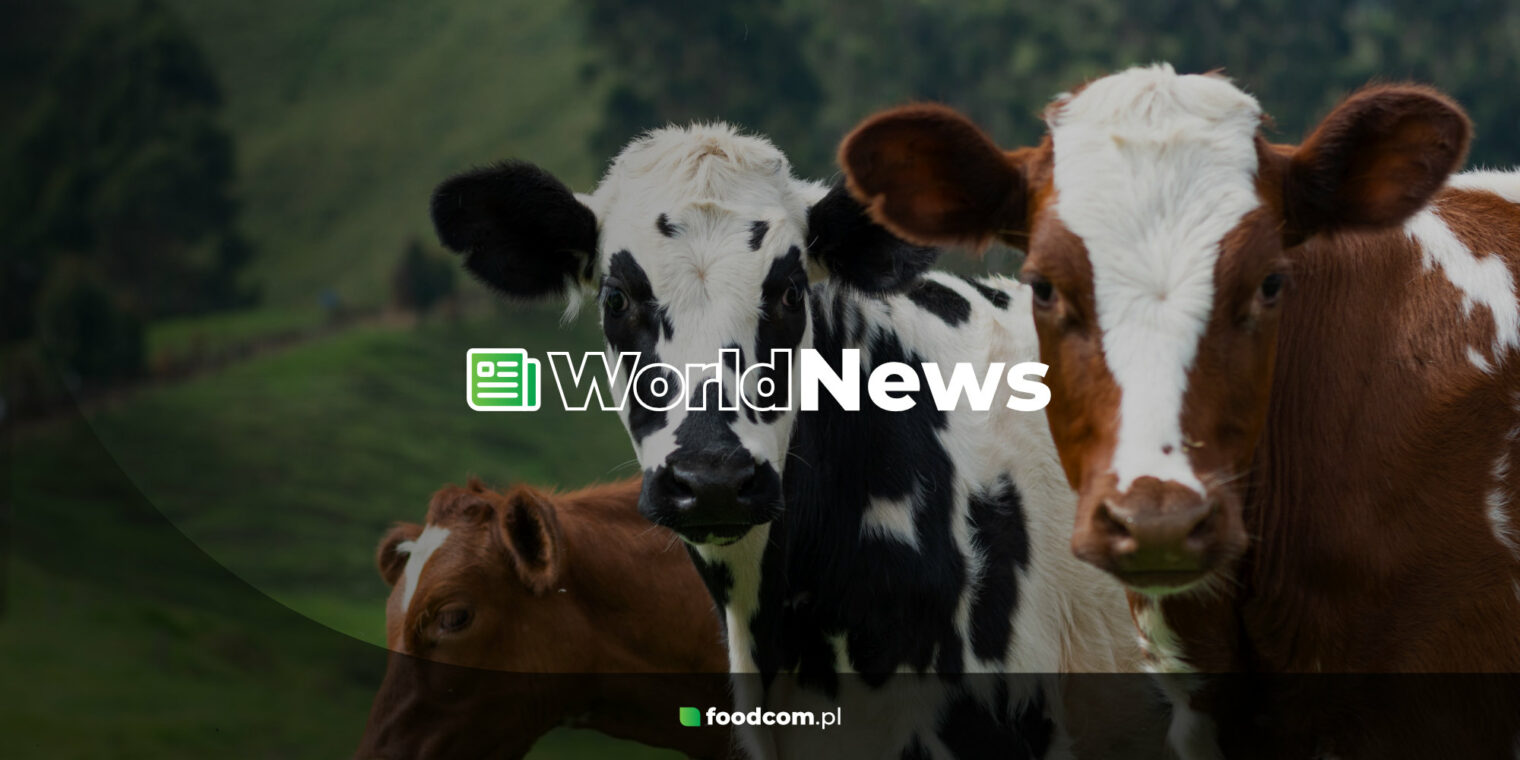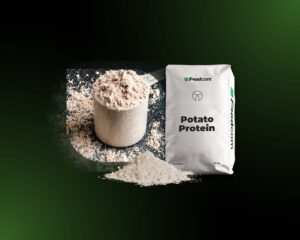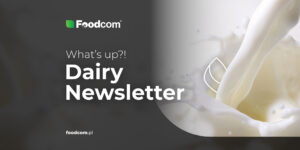Although not yet recognized as separate from the overall segment, the young animal nutrition sector is gaining interest globally. Experts believe that early intervention into animal feed can be the key to securing productivity in later stages of life. Adequately composed diet for young animals such as piglets and calves can provide wide benefits in terms of enhanced nutrient absorption, immunity buildup, and intestinal development and health.
The global milk replacers market is expected to be worth around $ 3.48 billion by the end of the year 2021, with a projected growth rate of 7.6% within the next year. Worldwide, the European market holds the largest share of the milk replacers market with Germany, UK, France, and Spain leading the way.
Overall, the European production of compound feed in 2020 saw a decrease during the pandemic in relation to the previous year. Only Portugal and Italy expected to note an increase of no more than 1% while Poland is projected to see a 1,3% increase. Based on the data from 2019, farm animals in Europe consume around 478 million tonnes of feed per year, of which 156 million tonnes is manufactured by feed compound producers. In Europe, 35% of all compound feed is produced for swine while cattle feed constitutes 25% of the market. The largest share of the compound feed market is owed to Spain, with the UK ranked second and France in third place. The list follows with Germany, Russia, and Italy.
The feed additives market was worth around $ 37.83 billion in 2019 and is expected to grow by 3.8% CAGR within the next seven years. Feed additives have a wide range of functionality including growth enhancement, improving gastrointestinal functions, and reduction of the risk of diseases. This segment is divided based on different components including amino acids, vitamins, antibiotics, and enzymes among others. In 2019, feed additives to poultry feed held the largest share of the market while the pig and piglet feed sector amounted to 28% market share.
European Animal Feed – Production, Consumption and Trade
European countries produced a total of 277.1 million tonnes of industrial feed in 2018. The leaders of which were Germany and Spain with 23.8 million tonnes and 28 million tonnes respectively. Spain ranked third with a production of 23 million tonnes of industrial feed. The list follows with the UK, the Netherlands, Italy, and Poland.
In 2019, the leader of animal feed consumption in Europe was Spain with 25 million tons of the product consumed, followed by Germany with 23 million tonnes while France comes third with 19 million tonnes. Those three countries were the major players in the European animal feed consumption sector in 2019 and altogether constituted a 44% share of the market. Other countries with significant consumption were Italy, the UK, the Netherlands, Poland, and Belgium, all together holding around 40% shares.
Soybean meal is one of the most popular ingredients as a plant-based animal feed protein. Globally, around 350 million tonnes of soybean meal is produced of which almost 97% is dedicated to animal feed production. As the European climate does not offer favorable weather conditions for soy cultivation, European countries need to import almost 65% of the overall protein feed demand which amounts to imports of 26 million tonnes of soya bean meal and almost 16 million tonnes of soya beans yearly.
Dairy-Based Young Animals Feed – Composition and Ingredients
Proteins and fats derived from dairy products are highly desirable ingredients of animal feed. Farmers are interested in feed dairy products for milk replacers in dry and powdered form due to their cost-effectiveness, long shelf life, and easy use. Milk-based and dairy-derived replacers are deemed as excellent as the digestive system of young animals is naturally programmed to function on milk. Milk replacers for calves commonly include by-products obtained in the milk processing such as dry whey (including lactose-free whey and whey protein concentrate), dried skimmed milk, and casein. The level of proteins in feed dairy products for calves should equal between 20% and 28%. Milk replacers for calves also contain carbohydrates, especially lactose, to supply energy sources as well as reinforcements in the form of vitamins and minerals. In milk replacers for piglets, it is also crucial to provide a high quality of ingredients such as whey powder, lactose, soy protein concentrate, and coconut oil. Within the first 2-3 weeks, piglets can only digest carbohydrates in the form of lactose, the plant-based diet is introduced in the weaning phase.
Typically, a calf milk replacer is composed primarily of milk solids amounting to around 70-80% while fats (both milk and added vegetable fats) constitute between 17% and 20%. Other ingredients include lecithin (around 2%), minerals (zinc, iron, copper), vitamins (A, D, and E), and additives such as antibiotics and antibacterial components.
There is ongoing research indented at exploring other potential additives for young animal feed e.g. dairy by-products obtained in the process of manufacture of most common dairy commodities. One of those is serum, a by-product ten times richer in phospholipids than bovine colostrum, making it an excellent ingredient of milk replacers for young animals such as calves or piglets.
Foodcom S.A. offers a wide variety of high-quality products commonly used in young animals’ nutrition. Our portfolio includes dairy components such as skimmed milk powder, colostrum, lactose, and milk protein concentrate, all suitable for the production of excellent milk replacers for calves and piglets. Moreover, Foodcom offers a range of plant-based feed proteins including wheat protein concentrate, soy protein concentrate, and potato protein.
Plant-Based Young Animals Feed – Composition And Ingredients
In terms of the plant-based feed market within Europe, the use for animal feed accounts for 60% of the total consumption of wheat, maize, and barely. The market is expected to grow within the next decade with increased demand for non-GMO and locally produced goods as well as enhanced demand for more variety in plant-based protein in feed products. On the European plant-based feed market, the main source of protein is soybean meal holding around 30% of the market share.
In 2018, the largest share of the feed mix market was owed to poultry feed with 34,2% while pig feed (including piglet starters and premixes) accounted for 31,2%. The third main sector was cattle feed with 28,6% of the market share.
In swine nutrition, feed is segmented based on the growing stage into grower feed, sow feed, and pig starter feed as the need for crucial nutrients differs with the animal’s development. In general, swine feeds require ample amounts of energy sources, low levels of fiber, and high protein content while remaining digestible. In the weaner phase, piglet feed should still contain products such as whey powder and lactose but in smaller doses. Weaner feed for piglets should provide a high quality of proteins found e.g. in soy protein concentrate or potato protein.
The most popular plant proteins used in piglet starters and premixes are potato protein, soy protein concentrates, and fish meal due to their high digestibility rate. Corn-based feed premixes are also a popular choice as they are cost-efficient and low in fiber. In terms of additives, it is common to incorporate vitamins, proteins, and compounds of antibacterial function into the piglet feed.
Changes Caused By The Pandemic
During the pandemic, in the milk replacers market, the farmers turned to fresh cow milk in order to save costs as the prices for farm-gate milk declined. In countries where increasing pork prices were seen, it led to the enhanced interest in growth-boosting and survival-assuring additives in piglet feed. According to the experts, the expenses on young animal nutrition were not compromised as manufacturers still find high-quality products relevant for productivity. The demand for calf milk replacers and calf starters was decreased during the peak of the pandemic but has been gradually rising since.
European Young Animal Feed Market – New Regulations
The European leadership in the milk replacers market is owed largely to the regulations introduced by the European Commission aimed at input costs reduction and improvement of young animal health.
At the beginning of 2020, the European Union introduced a regulation that bans the use of zinc oxide in animal feed by 2022 which largely affects the market for piglet feed additives. Zinc oxide was a popular component of piglet starters as it tends to prevent post-weaning diarrhea. The acceptable level of ZnO was lowered and the marketing authorization for the additive was allowed only in some cases but no later than 2022. This practice will push the producers of starters and premixes for piglets to search out and introduce viable substitutes for zinc oxide into their offer.
Furthermore, the European Commission will take on efforts to propel sustainability measures as part of the EU Farm to Fork program in 2021. Farmers can expect facilitated access to sustainability-promoting innovative feed additives. Moreover, new legislation solutions from the EU are expected to resolve deforestation issues associated with the soya bean cultivation, including FEFAC’s updated guidelines on soya sourcing.



![Co nowego w branży chemicznej Przegląd i analiza rynku [Maj 2025] Co nowego w branży chemicznej Przegląd i analiza rynku [Maj 2025]](https://foodcom.pl/wp-content/uploads/2025/06/Co-nowego-w-branzy-chemicznej-Przeglad-i-analiza-rynku-Maj-2025-300x169.png)



